TL;DR:
- Talking about mental health is important all year beyond Mental Health Awareness Month in May.
- Hearing people share their own voice about their personal experiences may be hard to find but there are sources out there.
- In this post, you will discover 10 books about mental health for your classroom. Consider content warnings and avoiding tropes and stereotypes.
Consider the Source
Mental health has been increasingly popular to discuss in education. It’s still just as important beyond May, which signifies Mental Health Awareness Month. How can we broach this topic with students in ways that address mental health stigma, rather than perpetuate it? What books, poems, and novels can we read and recommend to students? How can we ensure that these reads inform our classes, without tropes or negative stereotypes?
The topic of mental health is one where ‘own-voices’ matters especially. How many times have we seen on television or in films the oversimplification of experiences like bipolar disorder, addiction, and more? And how often do these representations become our (mis)understanding?
Own-voices literature can be difficult to find, however. We still live in a culture where stigma is both real and still thriving. Demanding that authors disclose so that we can ensure their “authentic” experience is harmful, in the same ways that tokenizing people in our real lives and asking them to educate us about the illness they might have or the challenges they face is equally problematic.
Discover ten books about mental health for your classroom to help students understand mental illness. Share on XBut many authors are ready to discuss their stories. There are plenty of options for ensuring experience-based narratives about mental health make it into the hands of your students, so they can learn more and connect with information that portrays mental illness both accurately and with dignity.
Content Warnings
Providing content warnings for potential readers is a necessary step in ensuring students’ psychological safety. Content warnings or trigger warnings help the reader or potential reader understand what will be in the book before they pick it up. If you have students in your classes struggling with self-harm, eating disorders, or other mental health conditions, then it may be a good idea to offer content warnings so that students can choose their reading or opt for alternative work.
‘Triggered’ is a word rooted in mental health vernacular. It is not synonymous with ‘offended’ as our culture has co-opted it to mean. People have used this phrase or term to suggest weakness or oversensitivity, especially when talking about youth. Triggers are very real and important experiences for teachers (and everyone) to understand. A trigger is something that instigates symptoms of a person’s mental health condition.
Triggers can take the shape of anxiety, panic, use of self-harm behaviors, disordered eating behaviors, and more. Triggers are different than finding a book or other content objectionable for moral, religious, or ethical reasons, however. Providing students with an overview before reading is an act of harm-reduction. It also helps to facilitate engaged and important dialogue about mental health in your classroom.
Avoiding Tropes and Stereotypes
Many representations of mental illness are rife with stereotypes. Theses stereotypes actually distance audiences and readers from understanding mental health. How many times have we seen bipolar characters one-noted as “moody”? The media depictions of characters who are bipolar often reflect a more rare form of bipolar disorder known as rapid cycling. Most people with bipolar disorder don’t change moods in a matter of minutes or hours but over extended periods of time.
Other tropes often used are presenting characters with eating disorders who are only thin, or unrealistic recovery meetings portrayed on TV. Tropes about mental illness, addiction, or eating disorders may oversimplify the experiences of people in real life. These stereotypes do harm rather than raise awareness.
With this in mind, it’s important to provide students with text and media representations that are accurate and thought-provoking. Offer a range of experiences. Venture beyond the most common diagnoses of anxiety and depression. Dispel stereotypes and misconceptions about serious mental illness; things like bipolar disorder (which has two types), schizophrenia and schizoaffective disorders, eating disorders, and substance use disorders.
Explore literature and media that address these things in different communities. Often, mental illness is shown through white-centered narratives, and this helps stigmatized views of mental health thrive in and about communities of color.
This is where own-voices texts may be helpful. Look for memoirs or novels written by and about people with mental illness. Look for the intersections offered in characters’ identities that show the complexity and range of experiences faced by those with mental illness.
Ten Books About Mental Health for Your Classroom to Help Students Understand Mental Illness:
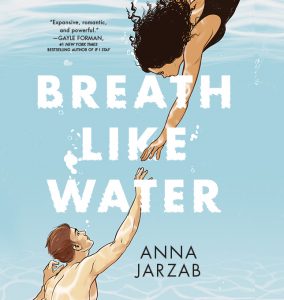 1. Breath Like Water by Anna Jarzab – YA Fiction (recommended audience: 9-12)
1. Breath Like Water by Anna Jarzab – YA Fiction (recommended audience: 9-12)
Breath Like Water is a fiction novel about two teenagers on the same swim team; one of whom experiences Bipolar II Disorder. The protagonist, Susannah, tries to love him through it the best she can, but she has her own very apparent mental health struggles that are undiagnosed. This book was a breath of fresh air for me as a reader, because it’s really fascinating to see the diagnosed and self-aware character so starkly contrasted with the protagonist, who has yet to receive help for her glaring mental health concerns. It does a really great job of addressing treated vs. untreated mental illness, and the ways we try to ‘fix’ those around us as an act of love.
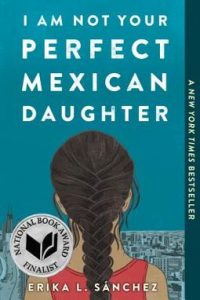
2. I Am Not Your Perfect Mexican Daughter by Erika Sanchez – YA Fiction (recommended audience: 10-12)
I didn’t want this book to end when I read it. It almost reads as a modern-day Perks of Being A Wallflower. The main character is holding on to her sister’s biggest secret, while struggling to feel like she is the family disappointment and trying to fiercely deal with her depression and grief at losing her sister Olga. It delves into issues of family, culture, gendered expectations, and perfectionism.
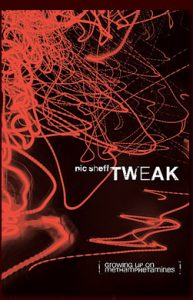 3. Tweak by Nic Sheff – memoir (recommended audience: 10-12)
3. Tweak by Nic Sheff – memoir (recommended audience: 10-12)
A great memoir about the effects of addiction on a person and their family. Author Nic Sheff, despite coming from a loving and supportive family, turned to drugs and used them long-term. His experiences reveal to readers that addiction and substance use truly do not discriminate. This book is accompanied by a memoir written by the author’s father David Sheff, titled Beautiful Boy. It has been made into a movie starring Steve Carrell. Tweak offers a very realistic and raw look at addiction and its grip on the human body and soul.
4. The Madness Vase by Andrea Gibson – poems (recommended audience: 9-12) 
This poetry collection by a spoken word giant, Andrea Gibson, covers a variety of topics. It opens with a poem titled “The Madness Vase,” in which the author grapples with their own coming of age, identity, and mental health. Andrea Gibson is a non-binary person who has such a range of experience. Their experience is reflected beautifully in this poetry collection about grief, loss, family, mental health, being LGBTQIA+, class and more.
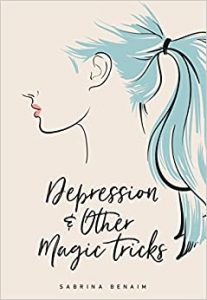 5. Depression and Other Magic Tricks by Sabrina Benaim – poems (recommended audience: 9-12)
5. Depression and Other Magic Tricks by Sabrina Benaim – poems (recommended audience: 9-12)
This collection by Sabrina Benaim includes poems about mental health and the realities of mental illness, as well as themes of love/relationships and family. Sabrina Benaim’s spoken word piece “Explaining my Depression to my Mother” is a salient and relatable introduction to this collection about depression and the realities faced by young people.
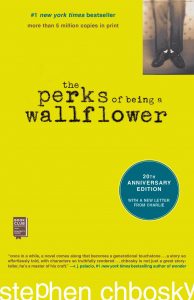 6. The Perks of Being A Wallflower by Stephen Chbosky – fiction (recommended audience: 9-12)
6. The Perks of Being A Wallflower by Stephen Chbosky – fiction (recommended audience: 9-12)
Perks is a coming-of-age story about a boy named Charlie. As the book opens, it’s revealed that his friend has taken his own life. Throughout the text, Charlie struggles with belonging, finding a group of friends, and constantly worrying about the people around him at the expense of himself. His own mental health is fragile, but his innermost thoughts pull us into his story as he seeks to come of age while experiencing the fallout of trauma and manage a mental illness.
 7. OCDaniel by Wesley King – fiction (recommended audience: 7-12)
7. OCDaniel by Wesley King – fiction (recommended audience: 7-12)
OCDaniel is a great look at the realities of OCD. Obsessive Compulsive Disorder is stereotyped in mainstream media. It’s depiction includes severe tics and germophobia. But there’s much more to it! The wonderful thing about this book is that the author draws from his own experience with OCD to create a story that readers can relate to.
8. Prozac Nation by Elizabeth Wurtzel – memoir (recommended audience: 10-12)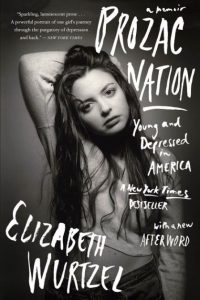
When I first read Prozac Nation, I was in high school. While officially a memoir, it’s also a feminist manifesto. It describes many of the realities women face in mental healthcare and systems that medicate, prescribe, and pathologize. Wurtzel does not sugar coat any part of her experiences being hospitalized or medicated, which contribute to the rawness and power of this memoir.
9. Good Enough by Jen Petro-Roy – fiction (recommended audience: 6-8) 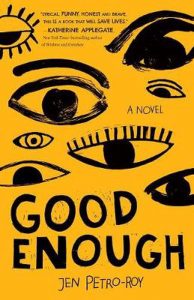
Good Enough is a wonderful fiction story about a girl named Riley, who struggles with an eating disorder. When it comes to eating disorders, it’s difficult to write stories without engaging in tropes or myths and misconceptions. Jen Petro-Roy’s experience with an eating disorder informs her writing of this book. She also penned a beautiful nonfiction guide, You Are Enough: Your Guide to Body Image and Eating Disorders. Together, these books teach middle grade students about body acceptance, fat phobia, and how to help people with eating disorders.
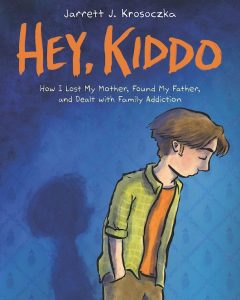 10. Hey, Kiddo – graphic novel (recommended audience: 7-12)
10. Hey, Kiddo – graphic novel (recommended audience: 7-12)
This graphic novel is pure power. It’s a memoir by Jarrett Krosoczka about family and addiction. The decision to translate this work into a graphic memoir is brilliant and bold. The author grew up with a mother addicted to drugs and a missing father. He found solace in art and drawing. So it makes sense that this book is a graphic novel because the author’s love for visual art and image is embedded in the incredible story. The genre makes this book accessible to middle grade students, and relatable and real to secondary students.
[scroll down to keep reading]

Talking About Mental Health
If you are talking to your students about mental health, this month or any month, do so with compassion and care. Still unsure how to address the topic? Check out the #PTSDandBeyond hashtag on Twitter and ask the community. It’s so full of personal experiences, resources, and love. Still looking for reads to add to your classroom library beyond this list? Reach out to me anytime!
About Cait O’Connor
Cait O’Connor is a fourth-year public school English/ESOL educator in New York, committed to social justice and equity in education and beyond.


